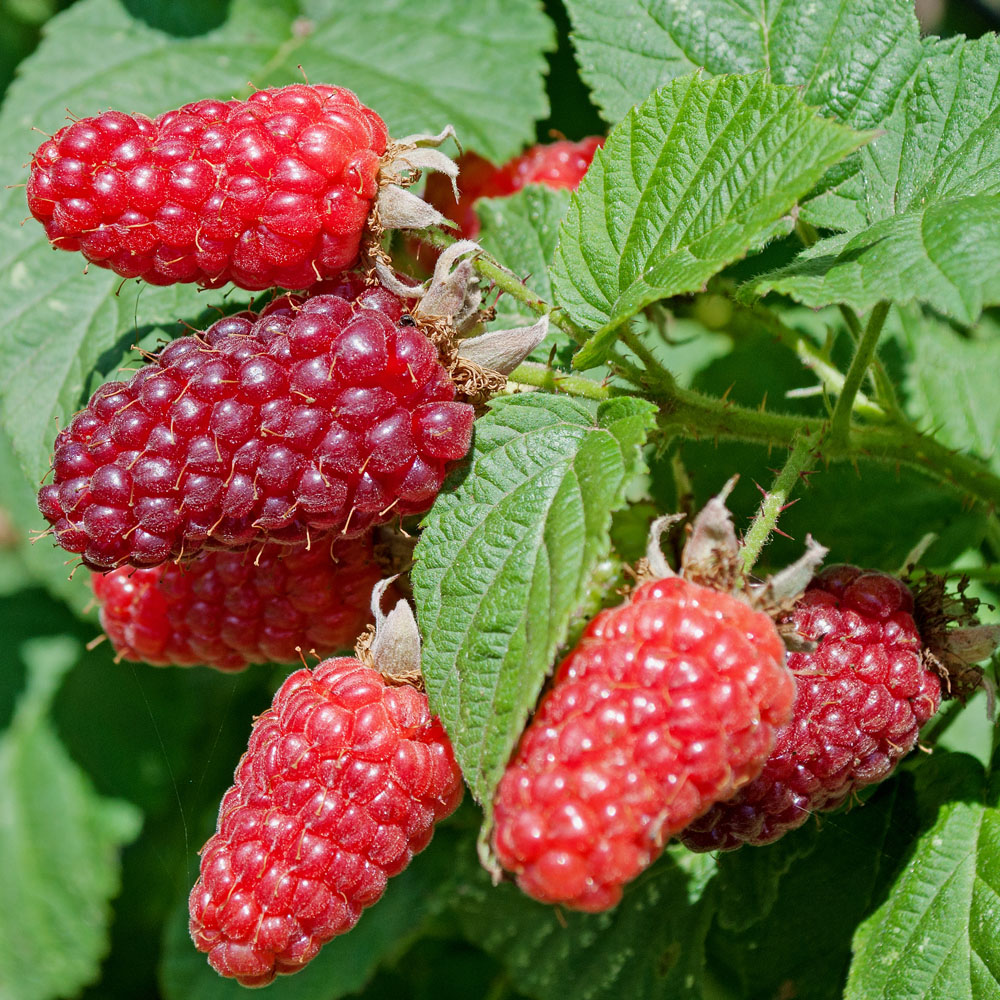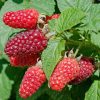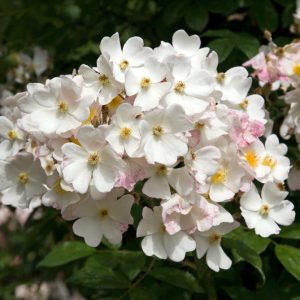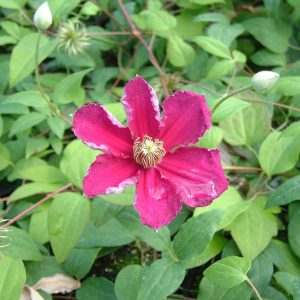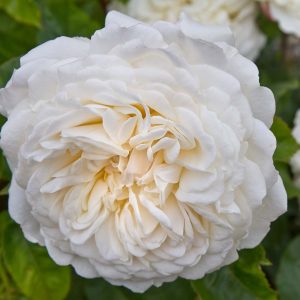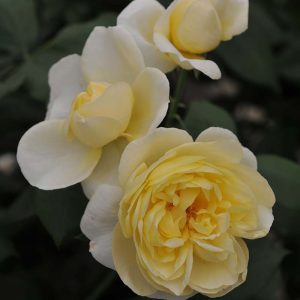Description
The Tayberry is a hybrid between Rubus fruticosus (blackberry) and Rubus idaeus (raspberry). The tayberry plant is a deciduous shrub that typically grows to a height of 1.5-2.5 meters (5-8 feet) and has an upright, thorny habit. The leaves are green and are divided into three to five leaflets with serrated edges, similar to both blackberry and raspberry. The flowers are white or pink and bloom in the summer, and the fruit is a large, deep-red berry that has a sweet-tart flavor. Tayberries are a relatively new type of fruit, developed in Scotland in the 1970s. They are often used in the same culinary applications as blackberries and raspberries, including jams, jellies, pies, and other desserts. Tayberries are a good source of vitamins, minerals, and antioxidants, and are also high in fiber. The tayberry plant is similar in cultivation to both blackberries and raspberries, and requires a similar growing environment. It prefers full sun to partial shade and well-drained soil. The plant is also prone to certain pests and diseases, such as cane blight and raspberry cane borers, so it is important to monitor the plant for any signs of damage or distress. With proper care, the tayberry plant can be a productive and rewarding addition to a home garden.
Key Facts
- Common Name(s):Tayberry
- Hardiness:Fully hardy
- How big will I get? Rubus fruticosus x idaeus ‘Tayberry’ can grow to a height of 2m and a spread of 2m.
- Did You Know That:The Tayberry was named after the River Tay in Scotland.
Plant Calendar
A rough guide to how this plant will change through the year.
| Jan | Feb | Mar | Apr | May | June | July | Aug | Sept | Oct | Nov | Dec | |
| Flowering Time |  
| |||||||||||
| Foliage Colour |  |
 |
 |
 |
 |
 |
 |
 |
 |
| J | F | M | A | M | J | J | A | S | O | N | D |
 
| |||||||||||
 |
 |
 |
 |
 |
 |
 |
 |
 |
Care Guide

Soil Requirements
Rubus fruticosus x idaeus ‘Tayberry’ prefers moist but well-draining soil. This plant prefers a neutral pH in soil and may not thrive in acidic or alkaline soil conditions.

Best Position
Rubus fruticosus x idaeus ‘Tayberry’ prefers a sheltered position and requires full sun to thrive, this consists of more than six hours of direct sunshine per day.

Maintenance
Rubus fruticosus x idaeus ‘Tayberry’ should be pruned regularly. Start by cutting out any dead or diseased canes at ground level after the harvest. In late winter or early spring, prune out old fruiting canes that have finished fruiting at ground level. To promote air circulation and sunlight penetration, thin out any overcrowded canes. Remove any suckers that are growing from the base of the plant as they will not produce fruit and will compete with the fruiting canes for resources. Select the strongest and most vigorous canes, and cut them back to about 3-4 feet tall.

Pest, Diseases and Wildlife
Rubus fruticosus x idaeus ‘Tayberry’ is generally pest free, and it tends not to have problems with diseases. It is also known to attract bees, butterflies and other pollinators. It is not considered to be toxic.
